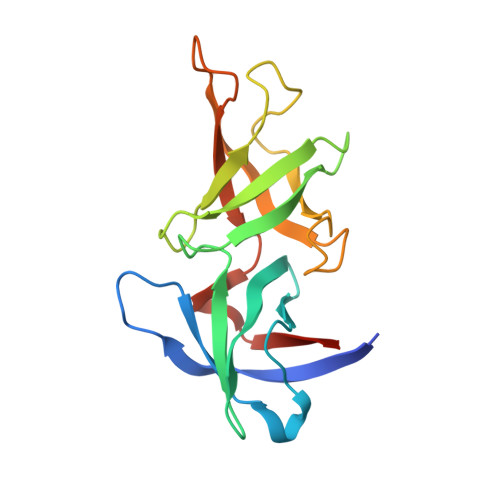Self-association of MreC as a regulatory signal in bacterial cell wall elongation.
Martins, A., Contreras-Martel, C., Janet-Maitre, M., Miyachiro, M.M., Estrozi, L.F., Trindade, D.M., Malospirito, C.C., Rodrigues-Costa, F., Imbert, L., Job, V., Schoehn, G., Attree, I., Dessen, A.(2021) Nat Commun 12: 2987-2987
- PubMed: 34016967
- DOI: https://doi.org/10.1038/s41467-021-22957-9
- Primary Citation of Related Structures:
6ZLV, 6ZM0 - PubMed Abstract:
The elongasome, or Rod system, is a protein complex that controls cell wall formation in rod-shaped bacteria. MreC is a membrane-associated elongasome component that co-localizes with the cytoskeletal element MreB and regulates the activity of cell wall biosynthesis enzymes, in a process that may be dependent on MreC self-association. Here, we use electron cryo-microscopy and X-ray crystallography to determine the structure of a self-associated form of MreC from Pseudomonas aeruginosa in atomic detail. MreC monomers interact in head-to-tail fashion. Longitudinal and lateral interfaces are essential for oligomerization in vitro, and a phylogenetic analysis of proteobacterial MreC sequences indicates the prevalence of the identified interfaces. Our results are consistent with a model where MreC's ability to alternate between self-association and interaction with the cell wall biosynthesis machinery plays a key role in the regulation of elongasome activity.
Organizational Affiliation:
Univ. Grenoble Alpes, CEA, CNRS, Institut de Biologie Structurale (IBS), Grenoble, France.
















